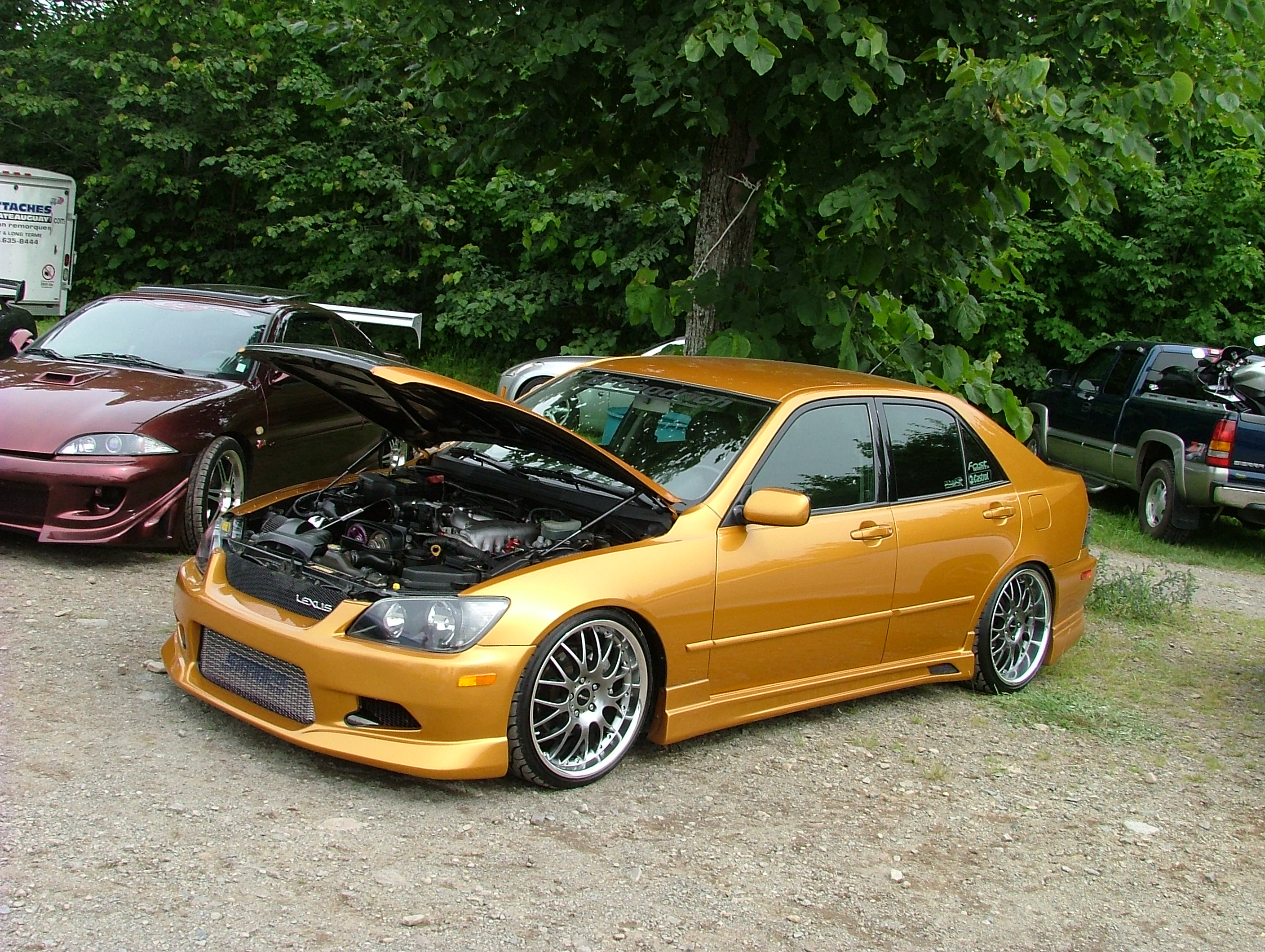The first-generation Altezza (codename XE10) was launched in Japan in October 1998, while the Lexus IS 200 (GXE10) made its debut in Europe in 1999 and in North America as the IS 300 (JCE10) in 2000. The first-generation, inline-6-powered IS featured sedan and wagon variants. The second-generation IS (codename XE20) was launched globally in 2006 with V6-powered IS 250 (GSE20) and IS 350 (GSE21) sedan models. A high-performance V8 sedan version, the IS F, premiered in 2007. Hardtop convertible versions, the IS 250 C and IS 350 C, debuted in 2008. According to Lexus, the IS designation stands for Intelligent Sport.

2004 Lexus IS300 Turbo
Produced as a direct competitor to the luxury sport sedans of the leading European luxury marques, the XE10 series Toyota Altezza and Lexus IS was designed with a greater performance emphasis than typically seen on prior Japanese luxury vehicles. The engineering work was led by Nobuaki Katayama, who was responsible for the AE86 project. The AS200 and AS300 Altezza sedans formed the basis for the Lexus IS 200 and IS 300 models sold in markets outside Japan, primarily North America and Europe. A hatchback-station wagon version was sold in Japan as the "Altezza Gita", and in the US and Europe as the Lexus IS SportCross. Overall, the XE10 came in three variants:

Lexus IS300
Introduced in 1998 with the AS200 (chassis code GXE10) and RS200 (chassis code SXE10) sedans, the compact vehicle was produced using a shortened front-engine, rear-wheel drive midsize platform, allowing Japanese buyers to take advantage of tax savings imposed by Japanese government regulations concerning vehicle exterior dimensions and engine displacement, and adapted parts from the larger second generation Aristo/GS. The 2.0-liter 1G-FE inline-six powered AS200 (GXE10, sedan) featured a six-speed manual transmission as standard, while a four-speed automatic was optional. The 2.0-liter 3S-GE inline-four powered RS200 (SXE10, sedan) featured a six-speed transmission, while a five-speed automatic was optional.

2003 Lexus IS300

2002 Lexus IS 300 E-Shift 4dr

Enchanting-Ace Lexus IS300

Tuned 2002 Lexus IS300

2004 Lexus IS300 Turbo
Produced as a direct competitor to the luxury sport sedans of the leading European luxury marques, the XE10 series Toyota Altezza and Lexus IS was designed with a greater performance emphasis than typically seen on prior Japanese luxury vehicles. The engineering work was led by Nobuaki Katayama, who was responsible for the AE86 project. The AS200 and AS300 Altezza sedans formed the basis for the Lexus IS 200 and IS 300 models sold in markets outside Japan, primarily North America and Europe. A hatchback-station wagon version was sold in Japan as the "Altezza Gita", and in the US and Europe as the Lexus IS SportCross. Overall, the XE10 came in three variants:

Lexus IS300
Introduced in 1998 with the AS200 (chassis code GXE10) and RS200 (chassis code SXE10) sedans, the compact vehicle was produced using a shortened front-engine, rear-wheel drive midsize platform, allowing Japanese buyers to take advantage of tax savings imposed by Japanese government regulations concerning vehicle exterior dimensions and engine displacement, and adapted parts from the larger second generation Aristo/GS. The 2.0-liter 1G-FE inline-six powered AS200 (GXE10, sedan) featured a six-speed manual transmission as standard, while a four-speed automatic was optional. The 2.0-liter 3S-GE inline-four powered RS200 (SXE10, sedan) featured a six-speed transmission, while a five-speed automatic was optional.

2003 Lexus IS300

2002 Lexus IS 300 E-Shift 4dr

Enchanting-Ace Lexus IS300

Tuned 2002 Lexus IS300
No comments:
Post a Comment